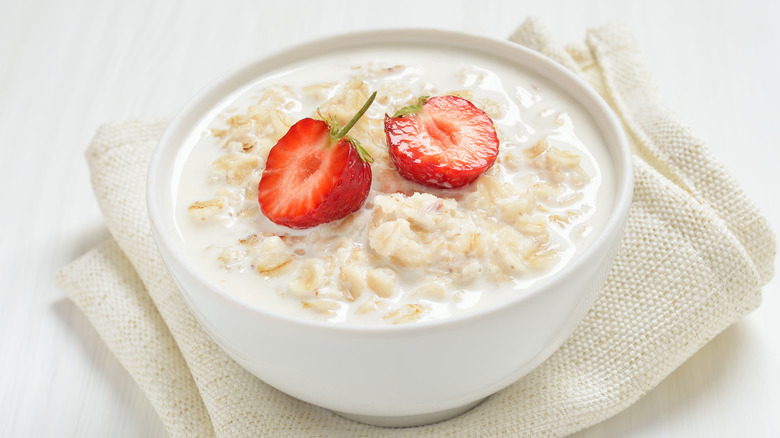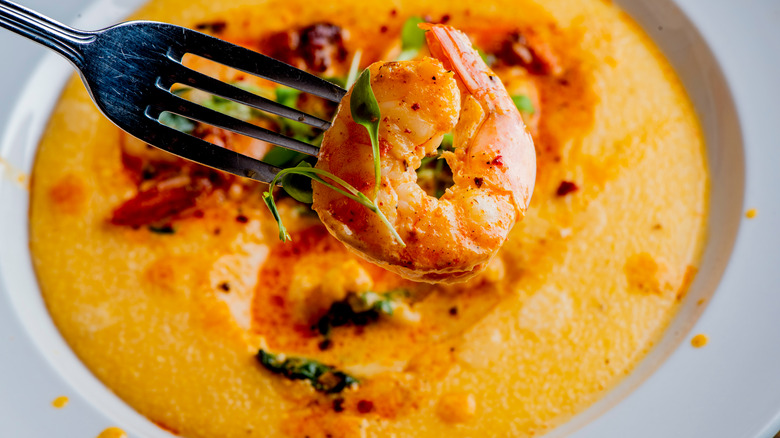The Absolute Best Thickness For Grits
Grits have a deep history in the United States and an outsized role in Black American culture. Deep South Magazine explains that members of the Muscogee Nation, who were indigenous to the southeastern territory of the U.S., ate a corn porridge similar to hominy, which they introduced to Europeans in the 1600s. Writing for Zora, Brooklyn White notes that grits, which were rationed by slave owners during the transatlantic slave trade, were similar to the African dish eba, made from cassava flour.
American grits are made from ground dent corn, which is starchier and not as sweet as the corn you eat on the cob (via Food Network). Like oatmeal, grits come in several different varieties, from stone ground, which is coarser in texture because the germ remains on the corn, to the more finely milled quick cook grits, and instant grits that simply need to be rehydrated.
Real Simple writes that cooking grits low and slow renders the best texture. Simmering the grits slows the release of its starches and constantly whisking early in the cooking keeps lumps at bay, giving the grits a silky consistency.
The preferred thickness of grits and how to get there
While thickness is based on personal preference, Master Class believes most palates prefer thicker grits. The website notes that grits themselves are rather flavorless, which makes it a fantastic base since it picks up the flavor of the items added to it, whether sweet or savory.
Whatever thickness you prefer, FoodsGuy advocates for making grits you can eat with a spoon. However, runny grits can happen. Maybe you used too much water or cooked them on too high a heat; Perhaps you just need to let them sit a for spell. But if your grits turn out too thin, don't stress. FoodsGuy says it can be as simple as reheating the grits to cook out the extra water, being mindful to keep it low and slow. Or, you can work an egg into the grits, which has the benefit of adding protein and makes the texture more custard-like. If neither of these methods work, strain the grits through a paper coffee filter to get rid of the excess water.
While some suggest using corn starch as a thickener, including Kitchenarry, FoodsGuy thinks this hack only adds to the bland starch of the grits without changing the texture. The site also notes that simply adding more grits to the already cooked mixture will render the results uneven, since the newly added grits won't be cooked through.

